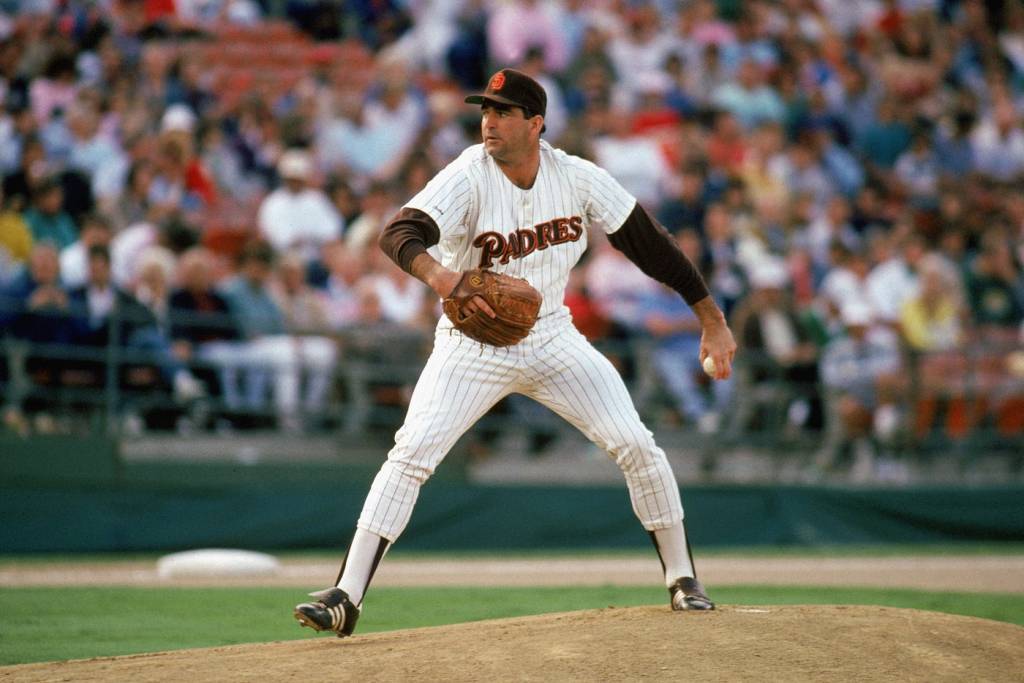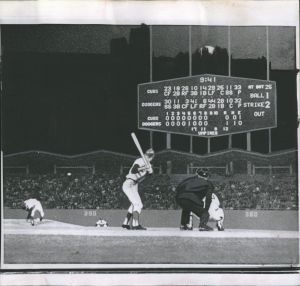Tagged: Pitching Coach
United States of Baseball- Utah
Utah is pushing to someday have a Major League team. While they wait, the Beehive State continues to grow its baseball tradition. The United States of Baseball is important for baseball powerhouses like California and Florida, and for less prodigious baseball states like Utah and its 43 Major League players. The greatest pitcher born in Utah is Bruce Hurst. His 34.52 career WAR is the 42nd highest among state and territory pitching leaders. The greatest position player born in the Beehive State is Duke Sims. His 12.78 career WAR is the 51st highest among state and territory position player leaders. Utah has a combined 47.30 WAR, ranking the Beehive State 50th among all states and territories.
There is always a first. The first player ever drafted from Utah was Bruce Hurst. The St. George native was selected by the Boston Red Sox in the 1st Round, 22nd overall, of the 1976 MLB Draft. The crafty Lefty pitched 15 seasons with 4 teams: Boston Red Sox (1980-1988), San Diego Padres (1989-1993), Colorado Rockies (1993), and Texas Rangers (1994). Hurst pitched in 379 career Games, made 359 Starts, 5 Games Finished, with 83 Complete Games, 23 Shutouts, 2,417.1 Innings Pitched, allowed 2,463 Hits, 1,143 Runs, 1,052 Earned Runs, 740 Walks, 1,689 Strikeouts, posted a 145-113 record, with a 3.92 ERA, 1.325 WHIP, and 104 ERA+. He has the second most Wins at Fenway Park with 57, behind only Mel Parnell’s 71. Hurst was the third pitcher to record 1,000 career Strikeouts with the Red Sox. He was inducted into the Red Sox Hall of Fame in 2004. He left Boston in Free Agency after the 1988 season after the Front Office played hardball and told him to test the open market. This was during the Owner’s Collusion to stamp out free agency. Ultimately Hurst signed with the Padres. His 1987 All Star selection remains Utah’s only trip to the Mid-Summer Classic. He is also the Beehive State leader in Wins, Losses, Games Started, Complete Games, Shutouts, Innings Pitched, Hits, Runs, Earned Runs, Home Runs, Walks, and Strikeouts. After retiring he served as a coach and scout internationally for Major League Baseball in Italy and Latin America, and as the Pitching Coach for the Chinese National Baseball team in 2005-2006 and 2012-2013.

The best season of Hurst’s career came with the 1989 Padres. He pitched in 33 Games, made 33 Starts, threw 10 Complete Games, including 2 Shutouts, in 244.2 Innings Pitched, allowed 214 Hits, 84 Runs, 73 Earned Runs, 66 Walks, 179 Strikeouts, posted a 15-11 record, with a 2.69 ERA, 1.144 WHIP, and 131 ERA+. Hurst led the National League in Complete Games. He also set career bests in Games Started, Innings Pitched, and ERA. The Padres finished just 3 Games Behind the San Francisco Giants for the National League West Division title.
Hurst pitched in three Postseason series: 1986 and 1988 American League Championship Series and 1986 World Series. He pitched in 7 Postseason Games, made 7 Starts, threw 3 Complete Games, in 51 Innings Pitched, allowed 46 Hits, 14 Runs, 13 Earned Runs, 12 Walks, 37 Strikeouts, posted a 3-2 record, with a 2.29 ERA, and 1.137 WHIP. Hurst nearly pitched the Red Sox to a World Series title against the Mets. He Started Games 1, 5, and 7. He threw 8 Shutout Innings in the Red Sox Game 1 victory. He pitched a Complete Game victory in Game 5. In Game 7, Hurst pitched 6 Innings and allowed 3 Earned Runs. When he left the game the score was tied 3-3, before the Mets pulled away for an 8-5 victory. Boston needed to win one of the final two games, but The Curse of the Bambino was stronger than Hurst’s Left Arm.
Duane “Duke” Sims made a career as a solid backstop. The Salt Lake City native played 11 seasons with 5 teams: Cleveland Indians (1964-1970), Los Angeles Dodgers (1971-1972), Detroit Tigers (1972-1973), New York Yankees (1973-1974), and Texas Rangers (1974). Sims played in 843 career Games, scored 263 Runs, collected 580 Hits, 80 Doubles, 6 Triples, 100 Home Runs, 310 RBI, 6 Stolen Bases, drawing 338 Walks, 483 Strikeouts, posting a .239 BA, .340 OBP, .401 SLG, .741 OPS, 112 OPS+, and 972 Total Bases. His most famous Home Run came on September 30, 1973 off of Fred Holdsworth. Sims hit the final Home Run at Yankee Stadium before the House That Ruth Built closed for two seasons for extensive renovations. Sims is Utah’s all-time leader in career Games Played, Plate Appearances, At Bats, Runs scored, Hits, Double, Home Runs, RBI, Walks, and Strikeouts. Career success is measured in many ways.
The best season of Sims’ career came with the 1970 Cleveland Indians. He played in 110 Games, scored 46 Runs, collected 91 Hits, including 12 Doubles, 23 Home Runs, 56 RBI, drew 46 Walks, 59 Strikeouts, .264 BA, .360 OBP, .499 SLG, .859 OPS, 131 OPS+, and 172 Total Bases. Sims set career best in Hits, Home Runs, RBI, SLG, OPS, and Total Bases. That Winter, Cleveland traded him to the Los Angeles Dodgers for Alan Foster and Ray Lamb.
Sims played in one Postseason series, the 1972 American League Championship Series with the Detroit Tigers. The Tigers lost in five games. Sims played in 4 Games, collected 3 Hits, 2 Doubles, 1 Triple, drew 1 Walk, 2 Strikeouts, with a .214 BA, .267 OBP, .500 SLG, .767 OPS, and 7 Total Bases. October can be a mystery for some teams.
No Utah native has been elected to the Hall of Fame. Bruce Hurst appeared on the 2000 Hall of Fame ballot and received one vote (0.2%). Duke Sims appeared on the Hall of Fame ballot in 1980, but received no votes. As the state produces more Major League quality players, Cooperstown should eventually get its first member from the Beehive State. Next the United States of Baseball returns to New England and The Green Mountain State. Vermont is next.
DJ
The Greatest Jewish Baseball Player of All Time- #1 Sandy Koufax
The Left Arm of God, a nickname like this is not given out to just any sort of pitcher. To earn this nickname you must be both extraordinary and dominating, both of which Sandy Koufax was during his career. Koufax played for the Brooklyn and Los Angeles Dodgers from 1955-1966. He did not emerge as a superstar until after the Dodgers moved to southern California following the 1957 season.
Koufax pitched 12 seasons for the Dodgers. He collected 165 wins against 87 loses, with a career 2.76 ERA. He pitched 137 Complete Games, 40 Shutouts, 2324 1/3 Innings, while Walking 817 batters against 2,396 Strikeouts. His has a career 1.106 WHIP with 9.3 Strikeouts Per 9 Innings. These are Hall of Fame numbers over a 12 year career. However, beginning in 1961, until his early retirement in 1966 Koufax dominated opposing batters in ways like never before. During this six year span Koufax averaged 22 Wins, 8 Loses, six Shutouts, 272 Innings Pitched, 69 Walks, 286 Strikeouts, with a 0.970 WHIP, 9.4 Strikeouts per 9 Innings. Remember, this is what he averaged.
The career achievements for Sandy Koufax include being a seven time All Star (twice in 1961), four World Series Championships, two World Series Most Valuable Player Awards (1963 and 1965), three pitching Triple Crowns (1963, 1965, and 1966), three Cy Young Awards (1963, 1965, and 1966), National League Most Valuable Player (1963), pitched four No Hitters, pitched a Perfect Game, and 1972 Baseball Hall of Fame (youngest ever).
Statistically, Koufax dominated opposing pitchers in the National League throughout his career. He led the National League in Wins (1963, 1965, and 1966), ERA (1962 through 1966), Complete Games (1965 and 1966, 27 in each season), Shutouts (1963, 1964, and 1966), Innings Pitched (1965 with 335 2/3 and 1966 with 323), Strikeouts (1961, 1963, 1965, 1966), WHIP (1962 through 1965), Strikeouts per 9 Innings (1960 through 1962 and 1964 through 1966), Strikeout to Walk ratio (1961, 1963, and 1965).
Koufax also made significant news off the pitchers mound, which continues to resonate. He decided he would not pitch in Game 1 of the 1965 World Series because it fell on Yom Kippur. While he did not receive as much negative attention as Hank Greenberg did for his decision to not play on Yom Kippur in 1934, there remained much contention over the decision after Don Drysdale lost Game 1. Following the 1965, Koufax, along with Drysdale, held out for a larger contract from General Manager Buzzie Bavasi. This was highly unusual for Major League players to stand up to management regarding their contracts. The hold out should be seen as an important step, along with Curt Floods’ refusal to accept a trade in 1969 to the Philadelphia Phillies, towards the establishment of Free Agency.
Following his retirement after the 1966 season Koufax worked as a baseball announcer for NBC from 1967 through 1972. He would return to the Dodgers in 1979 as a minor league pitching coach, and held this position until 1990. Koufax remains a much beloved figure in baseball, not just among the Dodger faithful.
Koufax dominated from the pitchers mound like all Major League pitchers wish they could, but only a select few have ever been able to. However, his greatness lies in the stretch over which he dominated, as most pitchers would be lucky to dominate in this fashion for a few starts or maybe a season. What also makes the greatness of Koufax most impressive is he did much of this while dealing with arm trouble that could have permanently handicapped him, and ultimately forced his early retirement at age 30. Sandy Koufax is one of the elite players in Major League history. His accomplishments on and off the diamond have earned him the spot as the Greatest Jewish Baseball Player of All Time
D



